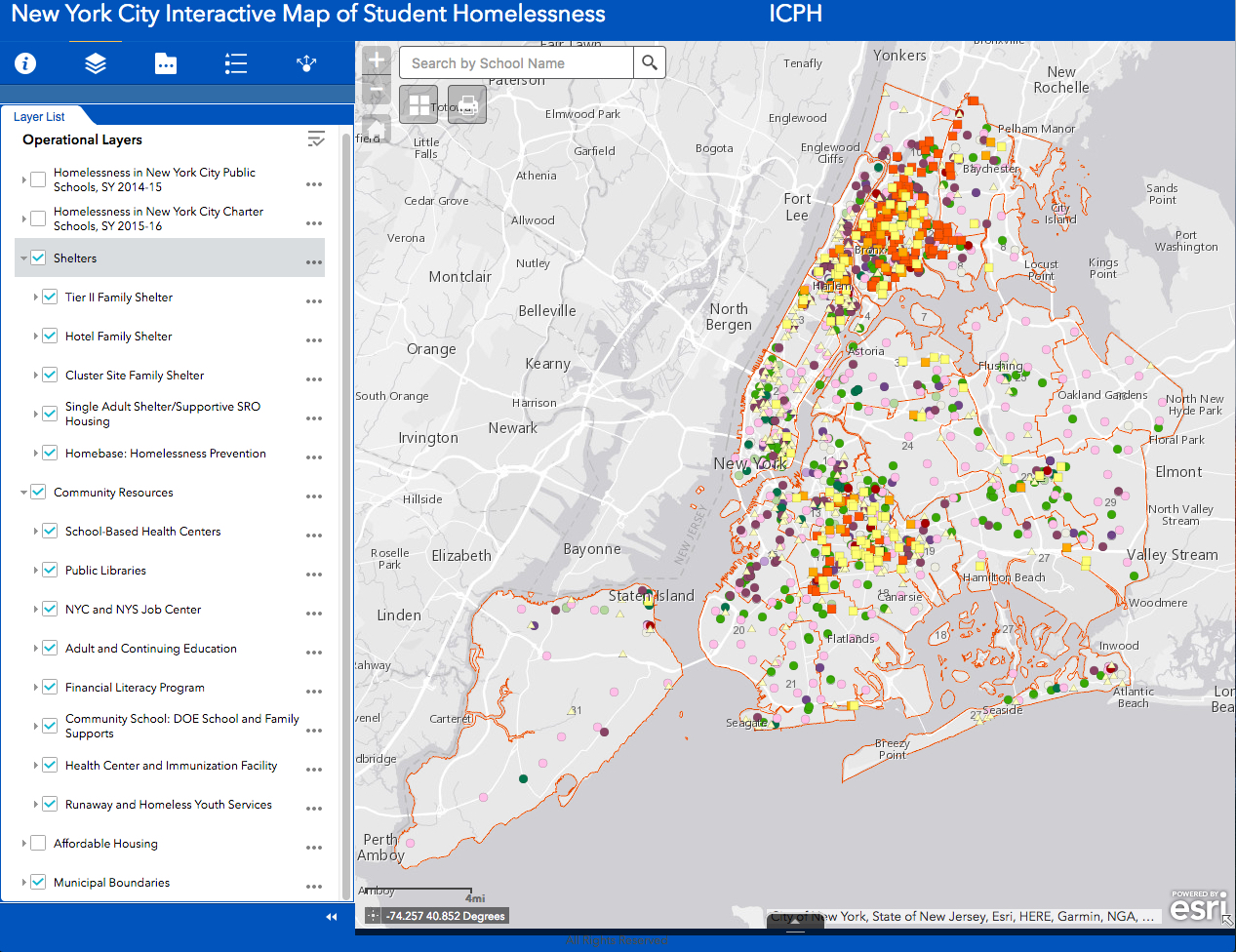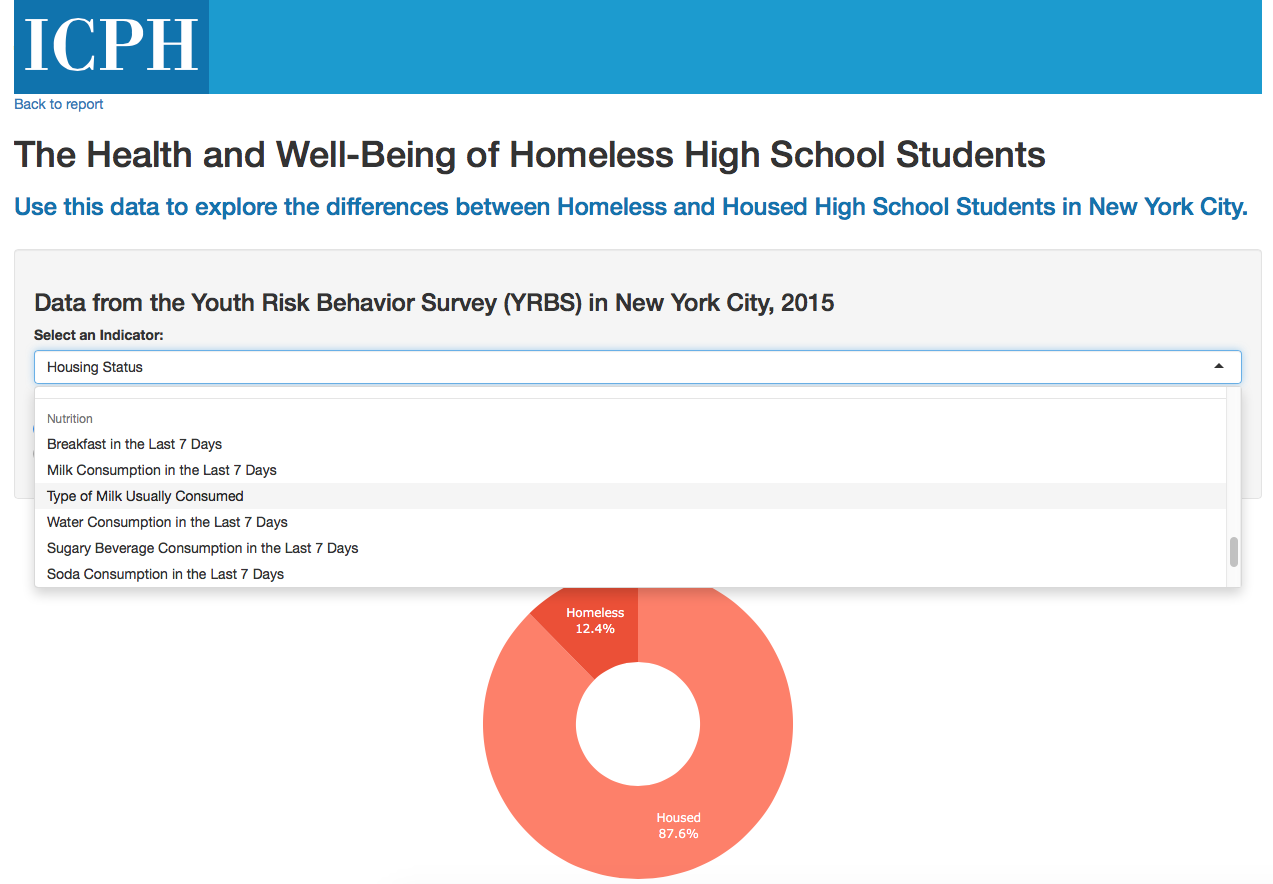Understanding and supporting the mental and physical health of homeless students is crucial to improving their ultimate academic and life outcomes. The landscape that matters within a neighborhood for homeless families and children is not only about schools and shelters. Various community resources offer important services and supports to families facing housing instability, and we need to have broader recognition of the available resources, as well as the gaps, in every community.
With that in mind, the Institue for Children, Poverty, and Homelessness added additional data to our Interactive Map of Student Homelessness so that educators, policy-makers, advocates, and all New Yorkers can see the big picture regarding student homelessness: what’s available—and what’s missing—in every neighborhood. The awareness of a concentration of homeless students in one part of the city, along with a list of available resources, may be useful. Seeing them plotted on a map, however, tells an even fuller story.

NYC Interactive Map of Student Homelessness
The new data added to the interactive map includes the location of job centers, adult and continuing education, financial literacy programs, and health centers. The purpose of this addition is to enrich the conversation about how we support homeless students, both in and out of the classroom and shelter.
In addition, ICPH continues to update our Health and Well-Being online data tool, which visualizes data from the CDC’s Youth Risk Behavior Study. The data we’ve worked to analyze and understand is easily accessible and downloadable for grant applications, policy briefs, and general information. Recently, we added detailed data around nutrition. When 33% of homeless high school students haven’t eaten breakfast in a week, we absolutely need a deeper dialogue around access to food.

Nutrition Data on YRBS App
We hope these tools will help users further explore and understand the deep and varied needs of homeless students and their families, while allowing people from different fields to tailor and engage with the data in a way that is meaningful to them and the unique needs of their organization.